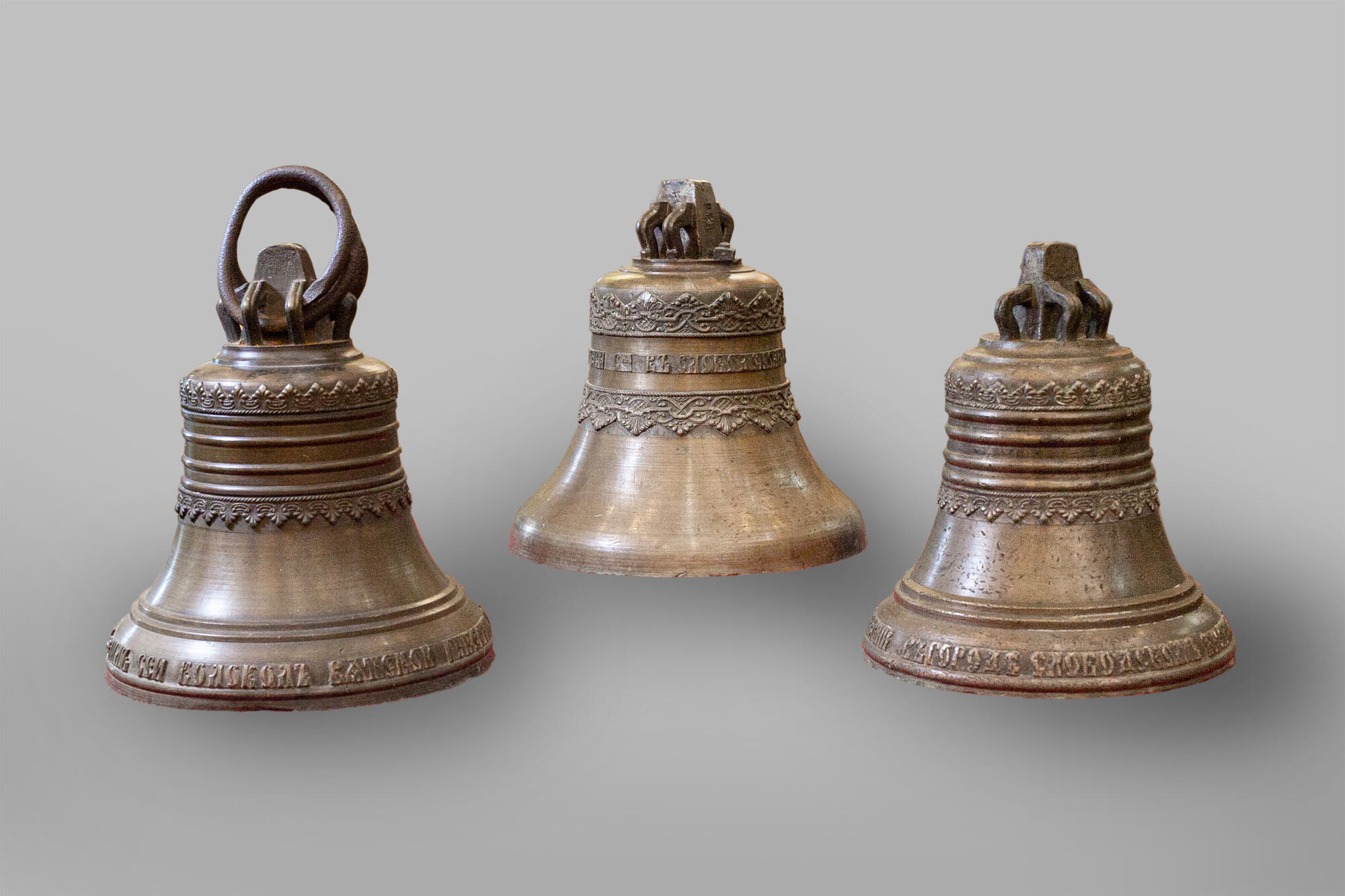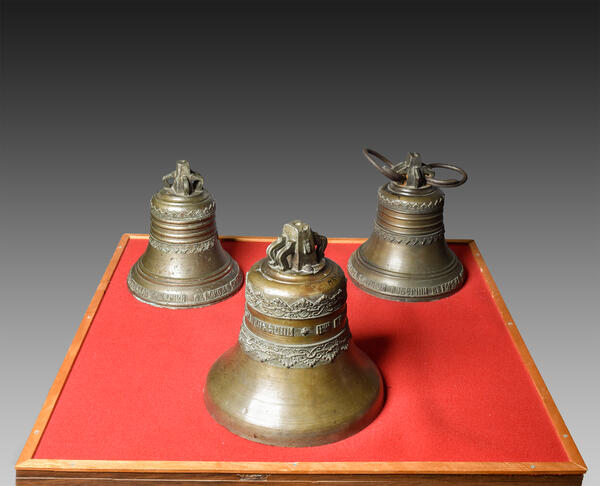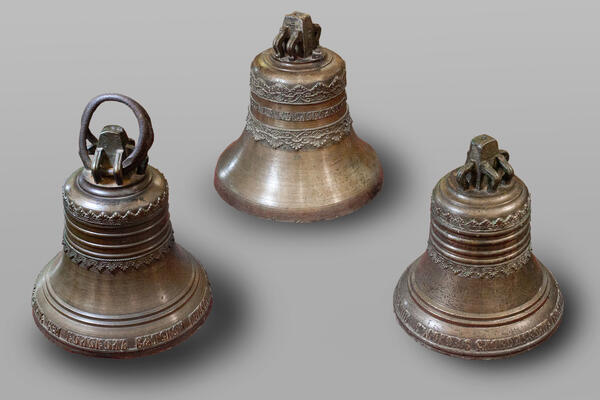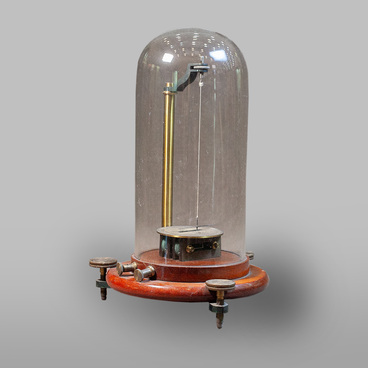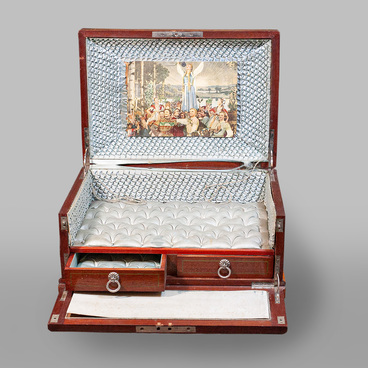In the early 18th century, Nikita Kirillovich Bakulev established a foundry in Slobodskoy on the territory of his estate. It was a foundry for casting bells to be used on mail coaches. The business turned out to be profitable and driving a troika with bells became extremely popular. Soon, the foundry was repurposed to produce church bells.
Nikita Bakulev’s sons and grandsons continued his legacy. In 1755, the Bakulev brothers already cast 300-pood bells at their foundry in Slobodskoy (1 pood being equal to approximately 36 pounds). The 105-pood bell of Ivan Bakulev was cast for the Sretenskaya Church and distinguished by “such a melodious voice that it invited people to sing along.” All bells were of excellent quality and were known for their beautiful sound. Between 1804 and 1847, the foundry belonged to Ivan Bakulev’s son Alexey, between 1847 and 1875 — his sons, and between 1875 and 1891 — to Nikolay Alexeyevich Bakulev as the sole owner.
The Bakulev bells were demonstrated at the All-Russia Exhibition in Nizhny Novgorod in 1896. For almost 200 years, representatives of seven generations of the Bakulev family cast personalized massive bells which sounded in Vyatka, Slobodskoy, towns of the Vyatka Governorate, and throughout the Russian Empire — from the Solovki to New Athos, and from Moscow to Nizhny Tagil.
Nikolay Bakulev owned the bell foundry in Slobodskoy between 1847 and 1891 and was the last representative of the Bakulev dynasty of bell foundry masters. After his death in 1891, the company was managed by his daughter — Lyubov Kurshakova. The last owner of the foundry was her son — Valentin Kurshakov. The foundry operated until 1917 under the name “The Son of Nikolay Bakulev’s Heiress”.
The exhibition of the Diorama Museum and Exhibition Center houses the famous Bakulev bells with the following inscriptions: “Cast by the Bakulev brothers in the town of Slobodskoy, Vyatka Governorate” — with a diameter of 290 cm; “Cast by Nikolay Bakulev in the town of Slobodskoy, Vyatka Governorate” — with a diameter of 350 cm; “Nikolay Bakulev in Slobodskoy Vyatka Governorate” — with a diameter of 360 cm.
Nikita Bakulev’s sons and grandsons continued his legacy. In 1755, the Bakulev brothers already cast 300-pood bells at their foundry in Slobodskoy (1 pood being equal to approximately 36 pounds). The 105-pood bell of Ivan Bakulev was cast for the Sretenskaya Church and distinguished by “such a melodious voice that it invited people to sing along.” All bells were of excellent quality and were known for their beautiful sound. Between 1804 and 1847, the foundry belonged to Ivan Bakulev’s son Alexey, between 1847 and 1875 — his sons, and between 1875 and 1891 — to Nikolay Alexeyevich Bakulev as the sole owner.
The Bakulev bells were demonstrated at the All-Russia Exhibition in Nizhny Novgorod in 1896. For almost 200 years, representatives of seven generations of the Bakulev family cast personalized massive bells which sounded in Vyatka, Slobodskoy, towns of the Vyatka Governorate, and throughout the Russian Empire — from the Solovki to New Athos, and from Moscow to Nizhny Tagil.
Nikolay Bakulev owned the bell foundry in Slobodskoy between 1847 and 1891 and was the last representative of the Bakulev dynasty of bell foundry masters. After his death in 1891, the company was managed by his daughter — Lyubov Kurshakova. The last owner of the foundry was her son — Valentin Kurshakov. The foundry operated until 1917 under the name “The Son of Nikolay Bakulev’s Heiress”.
The exhibition of the Diorama Museum and Exhibition Center houses the famous Bakulev bells with the following inscriptions: “Cast by the Bakulev brothers in the town of Slobodskoy, Vyatka Governorate” — with a diameter of 290 cm; “Cast by Nikolay Bakulev in the town of Slobodskoy, Vyatka Governorate” — with a diameter of 350 cm; “Nikolay Bakulev in Slobodskoy Vyatka Governorate” — with a diameter of 360 cm.
